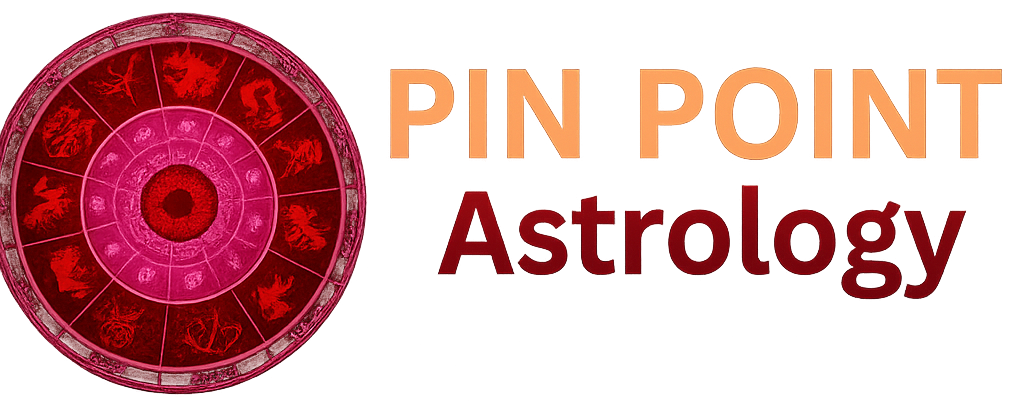Keywords to Target: 9 grahas in Vedic astrology, Navagraha mythology, planetary mythology astrology, modern application of 9 planets, Vedic astrology planets meaning, grahas stories and significance
Where Ancient Stories Meet Everyday Life
In Vedic astrology, the Navagrahas (nine planets) are not just astronomical bodies—they are living archetypes with personalities, histories, and karmic roles. Each graha carries a mythology rooted in ancient Hindu scriptures, revealing its character, blessings, and challenges.
What’s fascinating is that these ancient stories still mirror our modern experiences. The challenges of Shani (Saturn), the ambition of Surya (Sun), and the charm of Shukra (Venus) still play out in our daily lives—just as they did in mythic tales thousands of years ago.
Let’s explore the mythology of the 9 Grahas and see how their lessons apply in today’s world.
Surya (Sun) – The King of the Cosmos
Mythology:
Surya is the radiant Sun God, son of Sage Kashyapa and Aditi. Known for his brilliance, Surya is often depicted riding a chariot driven by seven horses, representing the seven days of the week and seven colors of light. Legends tell of his unwavering duty and vitality.
Modern Application:
In life, Surya represents authority, confidence, and vitality. A strong Sun in your chart may give leadership and recognition, but arrogance can be its shadow.
Lesson Today: Shine with confidence, but avoid burning others with ego.
Chandra (Moon) – The Mind and Emotions
Mythology:
Chandra was born from the churning of the ocean and is known for his beauty and soothing presence. He married the 27 daughters of Daksha (the Nakshatras), but favored Rohini, which angered Daksha and led to a curse, making the Moon wax and wane.
Modern Application:
The Moon reflects our emotions, moods, and mental health. Its waxing and waning mirror our emotional cycles.
Lesson Today: Balance emotional highs and lows; nurture yourself consistently.
Mangal (Mars) – The Warrior
Mythology:
Mangal is the son of Bhumi Devi (Earth Goddess) and is known as the God of War. He is courageous, disciplined, and protective but also prone to aggression.
Modern Application:
Mars represents action, drive, and passion. In the modern world, it’s our ambition and ability to fight for what’s right—but unchecked, it can lead to conflict.
Lesson Today: Channel energy into productive action, not impulsive fights.
Budh (Mercury) – The Messenger
Mythology:
Budh is the son of Chandra (Moon) and Tara, the wife of Brihaspati (Jupiter), making his story one of celestial scandal. Despite his complicated origins, Budh is wise, witty, and skilled in communication.
Modern Application:
Mercury rules speech, intellect, and adaptability. In today’s fast-paced communication-driven world, a strong Budh is essential for success.
Lesson Today: Speak with clarity and integrity.
Brihaspati (Jupiter) – The Guru
Mythology:
Brihaspati is the teacher of the gods, known for his wisdom, righteousness, and spiritual guidance. He is often sought for counsel during disputes.
Modern Application:
Jupiter stands for wisdom, ethics, and expansion. In modern life, he’s the mentor, the advisor, the voice of conscience.
Lesson Today: Seek and share wisdom with humility.
Shukra (Venus) – The Asura Guru
Mythology:
Shukra is the teacher of the Asuras (demons) and master of the Sanjeevani Vidya, the art of reviving the dead. He is associated with beauty, luxury, and love, but also temptation.
Modern Application:
Venus governs love, art, wealth, and pleasures. In our consumer-driven age, Shukra reminds us to enjoy life but not lose ourselves in excess.
Lesson Today: Balance pleasure with purpose.
Shani (Saturn) – The Karmic Judge
Mythology:
Son of Surya and Chhaya, Shani is feared for his slow, intense influence. Myths say even gods were cautious of his gaze. However, he rewards hard work and punishes laziness or injustice.
Modern Application:
Saturn represents discipline, responsibility, and life’s tests. He teaches patience and perseverance.
Lesson Today: Respect time, fulfill duties, and embrace slow growth.
Rahu – The Shadow of Desire
Mythology:
Rahu was once a demon who disguised himself to drink amrita (nectar of immortality). Vishnu beheaded him, but his head lived on as Rahu, causing eclipses by swallowing the Sun and Moon.
Modern Application:
Rahu represents obsession, illusion, and foreign connections. In modern terms, it’s the force that drives us to chase big dreams—but sometimes without clarity.
Lesson Today: Chase ambitions, but check if they align with truth.
Ketu – The Spiritual Dissolver
Mythology:
Ketu is the headless body of the demon beheaded alongside Rahu. Unlike Rahu, Ketu is about detachment, spirituality, and liberation.
Modern Application:
Ketu brings introspection and freedom from material desires. In our busy, overstimulated lives, Ketu’s lesson is invaluable.
Lesson Today: Detach from the noise to connect with your higher self.
Why These Myths Still Matter Today
These stories are more than cultural heritage—they are psychological archetypes. Each planet’s mythology mirrors human traits, challenges, and growth patterns. By understanding them, we gain a roadmap for navigating relationships, career, health, and personal development.
Practical Tips to Align with the Navagrahas in Daily Life
Sun: Offer water to the rising Sun each morning.
Moon: Practice moon-gazing or meditation during full moon nights.
Mars: Channel energy into exercise or martial arts.
Mercury: Read, write, and sharpen communication skills.
Jupiter: Engage in spiritual study or mentor others.
Venus: Create beauty—art, music, or nurturing relationships.
Saturn: Keep commitments and respect elders.
Rahu: Learn new technology or explore foreign cultures—mindfully.
Ketu: Meditate and practice detachment.
Living the Graha Stories Today
The Navagraha stories are not relics of the past—they are living guides. Their myths, woven into Vedic astrology, continue to shape our choices, challenges, and victories in the 21st century. By learning from both their virtues and flaws, we can create more balanced, conscious, and fulfilling lives.
In essence: The 9 Grahas are not distant gods—they are reflections of us, reminding us that our destiny is both written in the stars and shaped by our actions.
,

